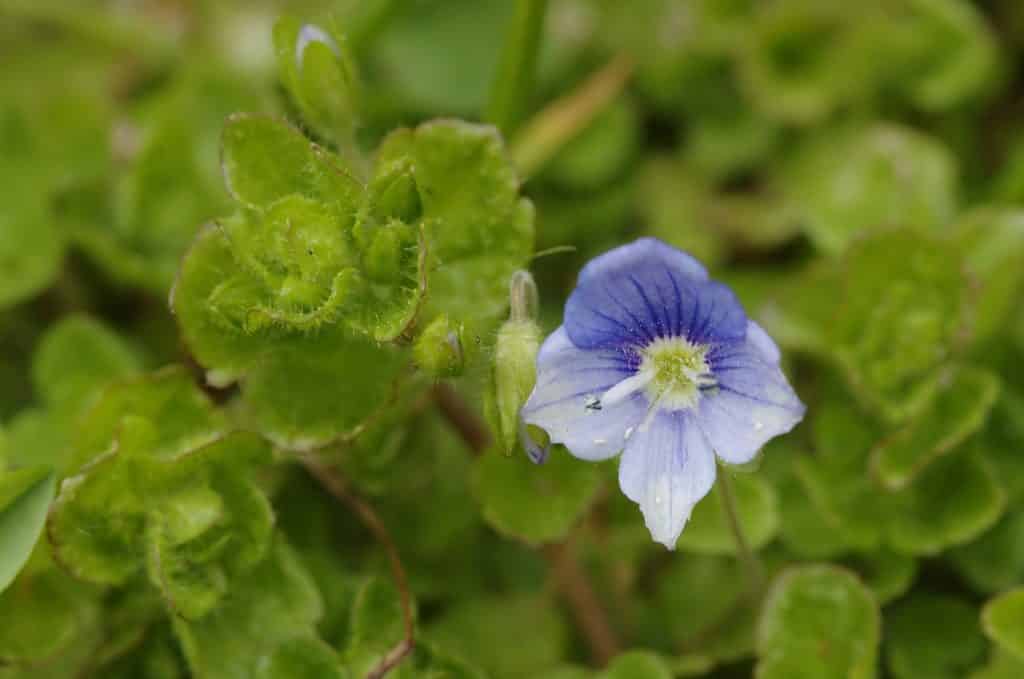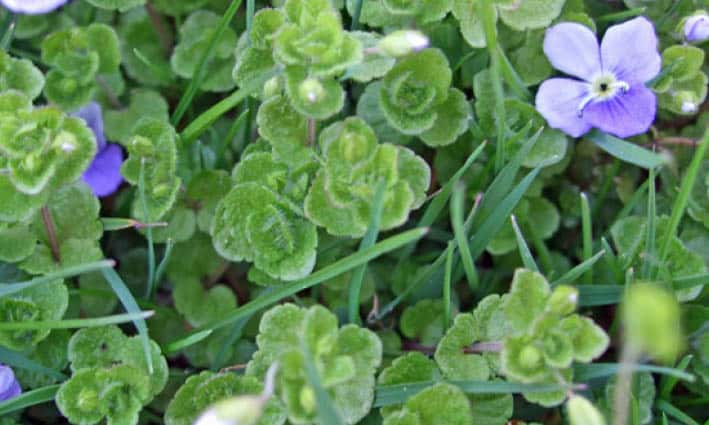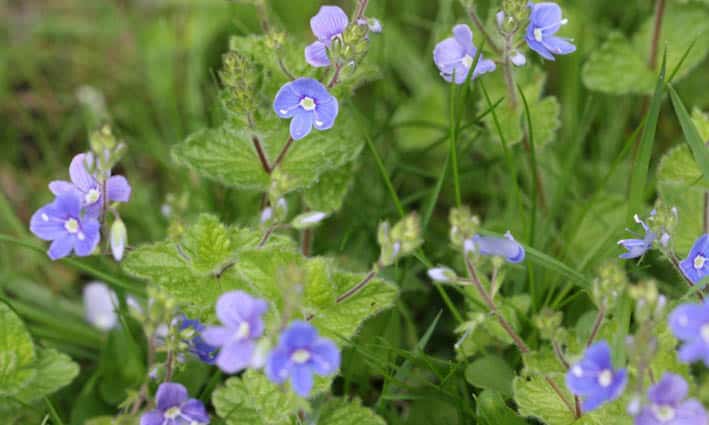

What are speedwells?
Speedwells are a common variety of lawn weed. The two most common speedwells are germander speedwell (Veronica chamaedrys) and slender speedwell (Veronica filiformis).
These quick-growing plants are often found growing through the thatch layer on lawns. They are a notoriously difficult lawn weed to control.
Why are they difficult to control?
The selective herbicides available on both the professional and domestic markets are only effective during a short window each year. This window can change every year due to varying environmental and seasonal conditions.
Speedwells often have hairy leaves, which limit the amount of herbicide that reaches the plant’s foliage, further reducing their effectiveness.
Speedwells are also very effective at reproducing via cuttings. Any small amount that is cut during mowing can create viable cuttings, helping the plants to regrow in other areas of the lawn very quickly.
What do they look like?


Slender speedwell


Germander speedwell
How does Green Man Lawn Care control speedwells?
Althought herbicides are the most effective method of controlling speedwells, cultural control methods such as manual control (removing it by hand) and Scarification can also be used.
As the window of opportunity to control speedwell is short and changes each year, we will apply a speedwell-specific herbicide during your Spring and Early Summer Treatments. We would also recommend Scarification in the autumn period to help reduce the thatch layer.
Is there anything I can do to control speedwell?
Speedwell can be controlled by removing it by hand. The easiest and most effective way of controlling it is to find a section of the plant and start removing it slowly by lifting the sections out from the thatch. Each section can be very long so it is important to try and lead your way back to the start of each plant.
The best way of controlling speedwells is to maintain a thick sward of grass through good mowing and irrigation, combined with your Green Man Lawn Care treatments and services.
